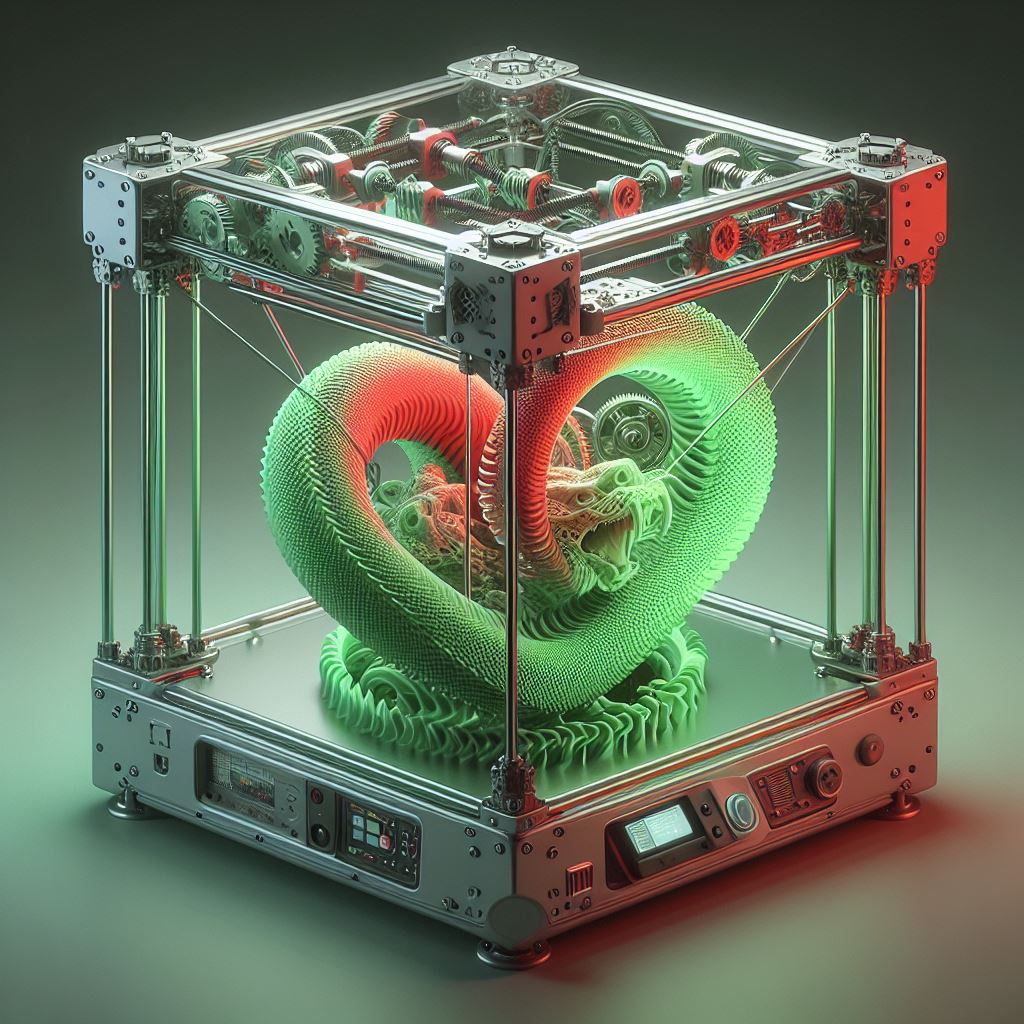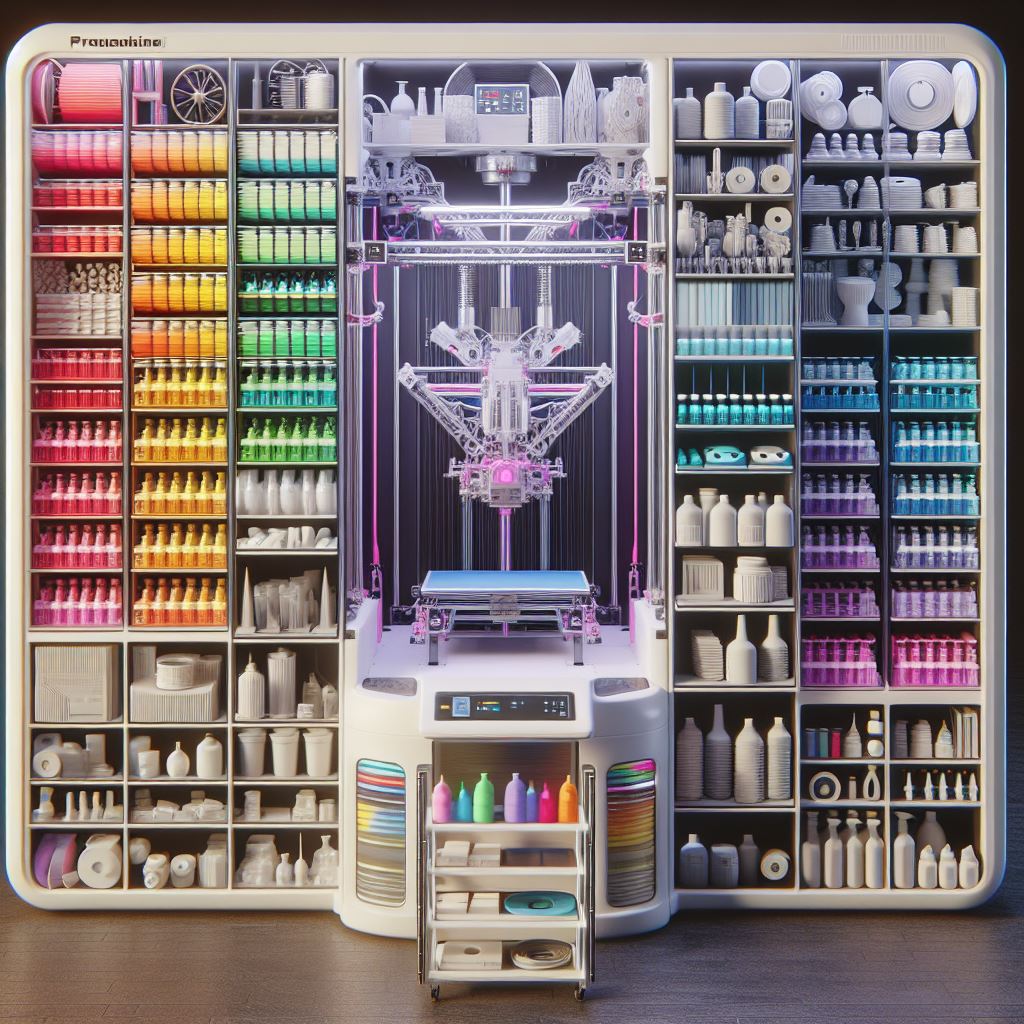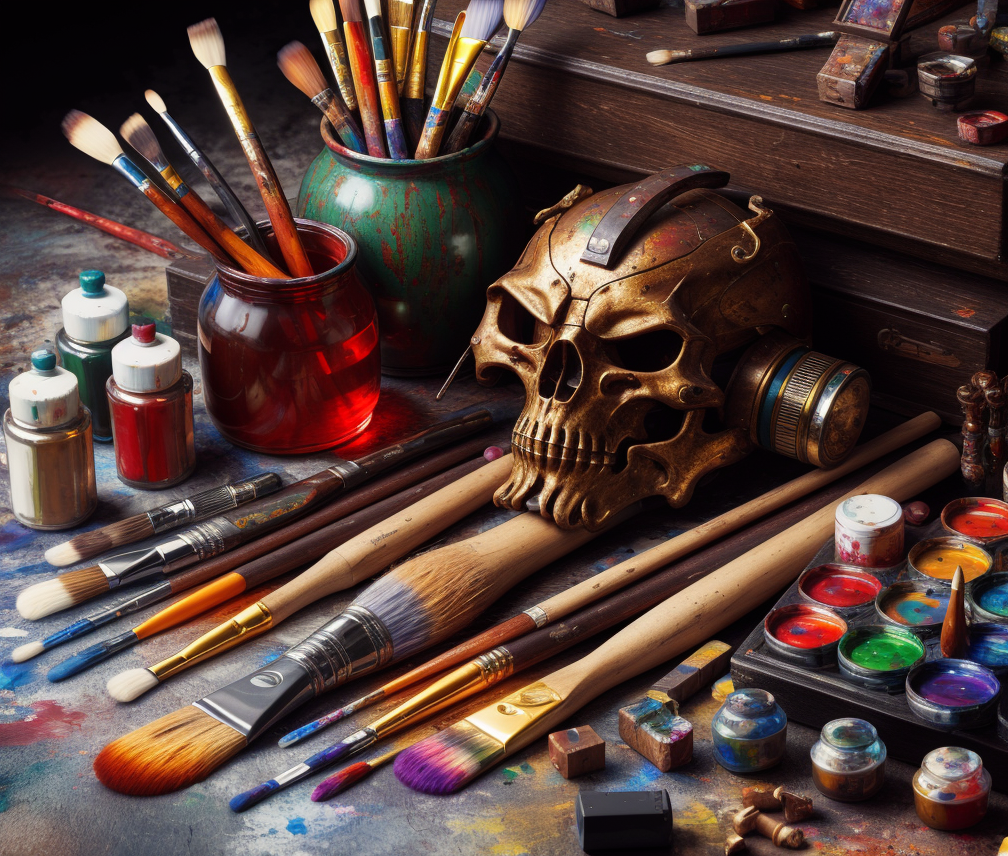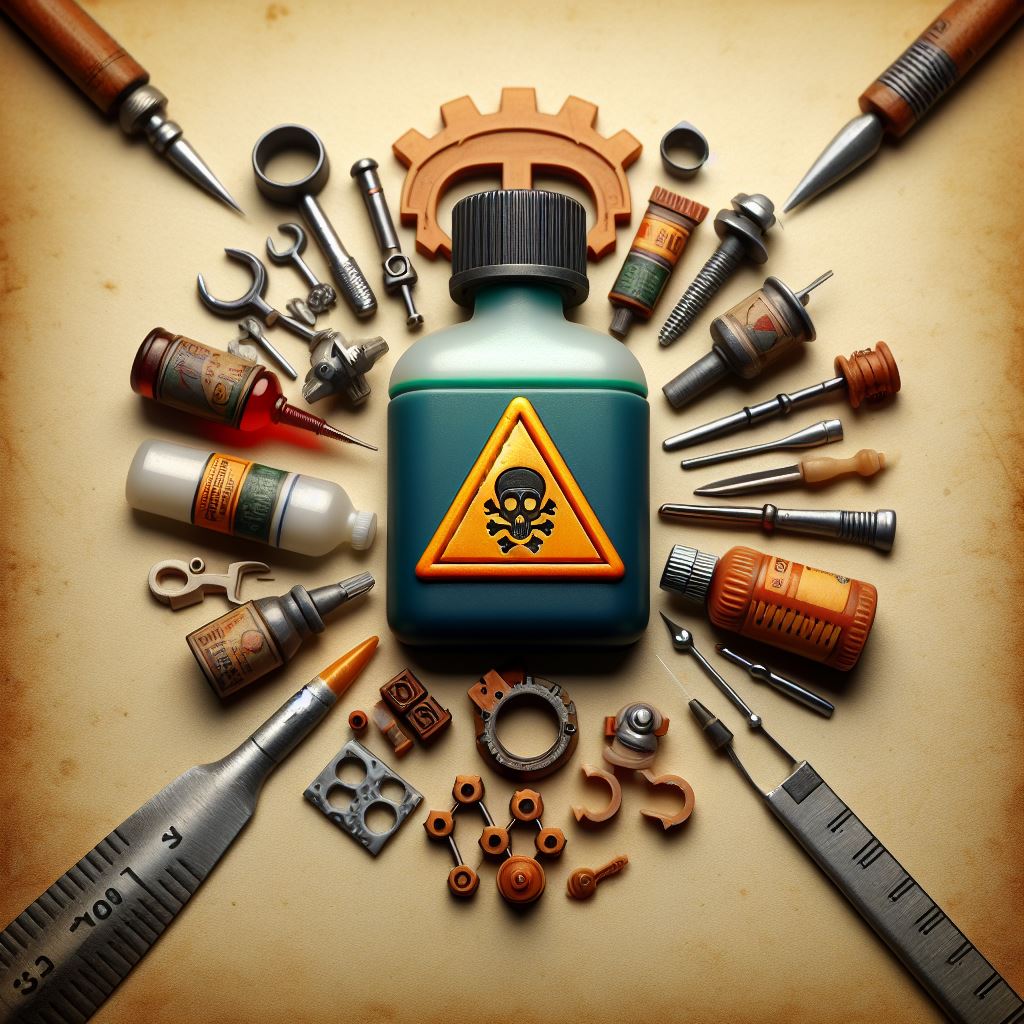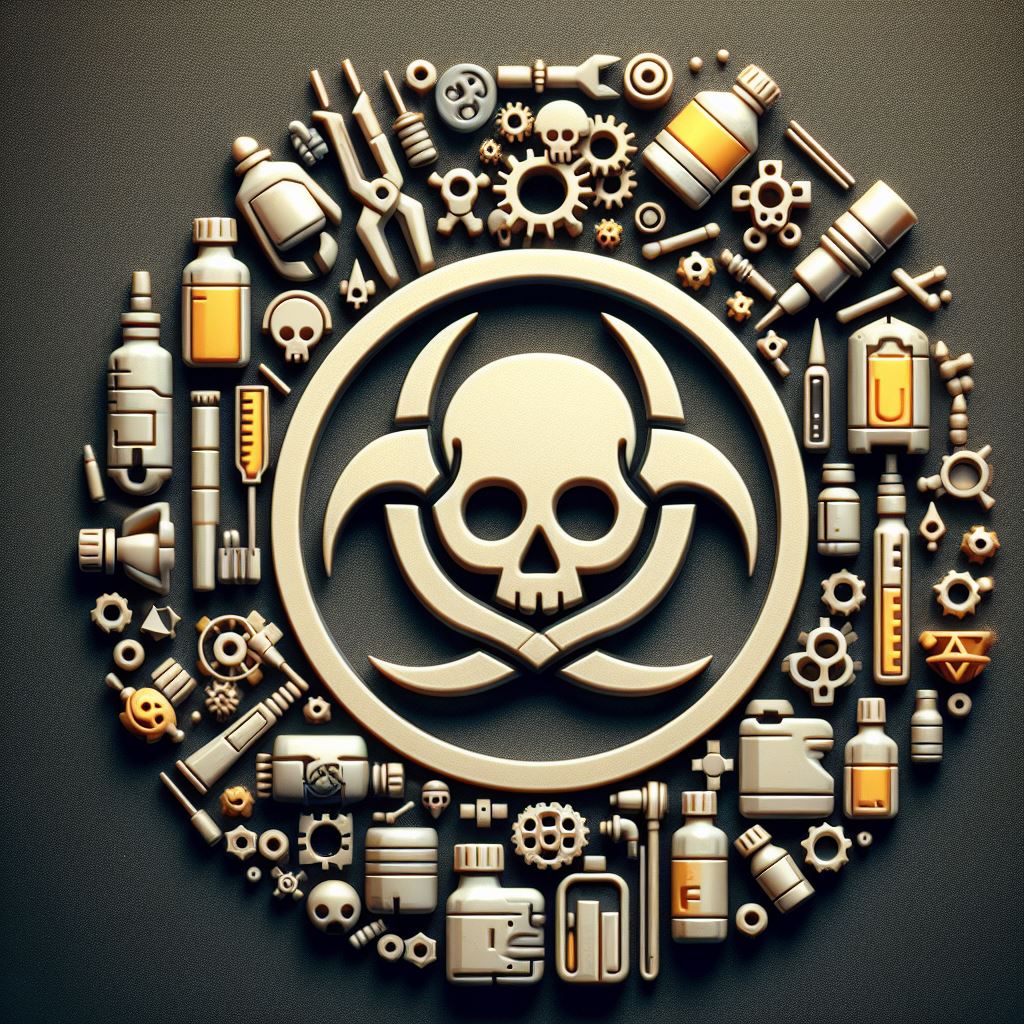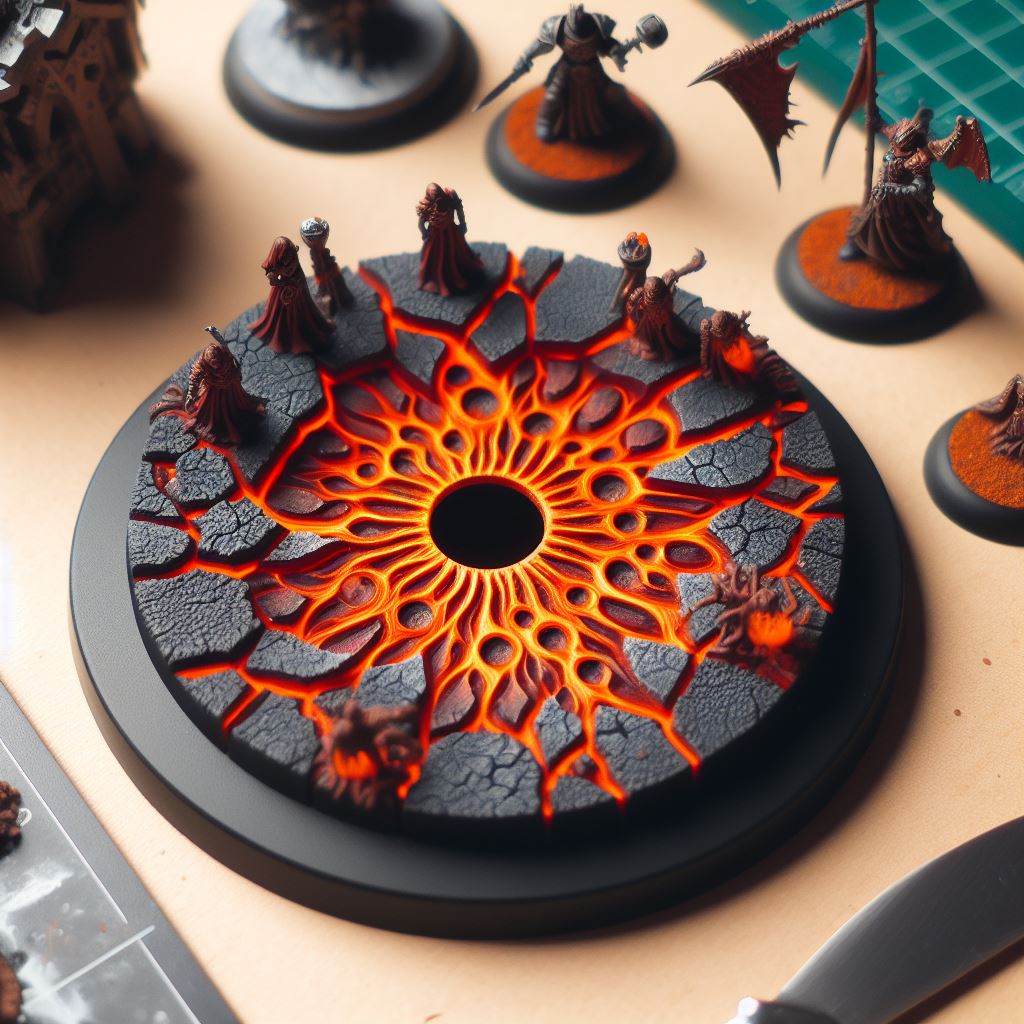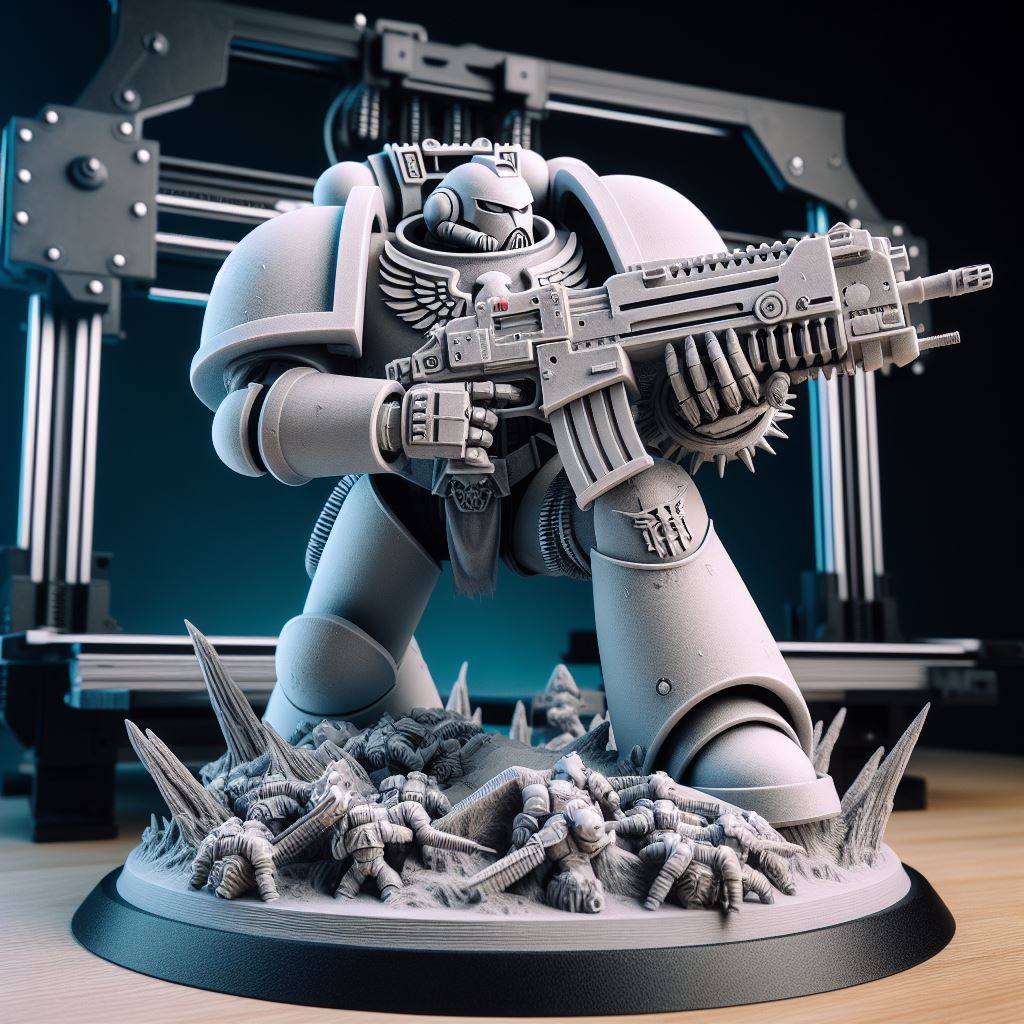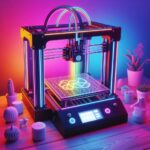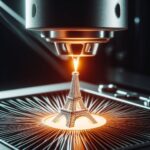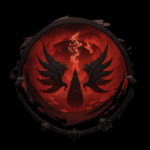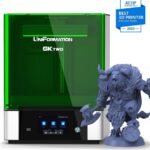How To Clean Up And Paint 3D Printed Miniatures – A Guide For 2024
As a passionate miniature hobbyist with over 20 years of experience, I want to share the ultimate guide on how to clean up and paint 3D printed miniatures. Whether you are printing miniatures for Dungeons & Dragons, Warhammer, RPGs, wargames, or just want amazingly detailed collector’s pieces, following these techniques will take your prints to the next level.
At Warhammer Universe, we are obsessed with 3D printing and miniature painting. Our team has tested countless methods to get pristine miniatures off the print bed and give them incredible, vivid paint jobs.
In this guide, I’ll walk you step-by-step through:
Preparing The Perfect Print
From choosing the right 3D model files to dialing in your slice settings, I’ll share pro tips to get stunning print quality right out of the gate. Less cleanup work means more time for the really fun part – painting!
Cleaning & Smoothing Techniques
Learn how to properly wash, trim, sand and polish your miniatures. I’ll recommend specific tools and materials for eliminating layer lines, strings, and other 3D printing artifacts.
Priming & Painting Methods
Discover invaluable techniques like dry brushing, edge highlighting and washing to make your paint jobs pop. The right supplies, paint types and application process can make all the difference.
Advanced Weathering Tricks
Take your miniatures to the next level by battle damaging and weathering them. Chips, scratches, rust, mud and more add incredible realism.
Choosing High Quality 3D Model Files
The foundation of every great 3D printed miniature project starts with the 3D model file itself. You want to select files that are optimized for tabletop gaming and collecting.
Many sites like Cults3D, Pinshape and MyMiniFactory offer tons of free and paid options. I also love supporting individual creators on platforms like Patreon and kickstarter campaigns from small studios like Kickstarter.
Some of my favorite miniature designers include ArchVillain Games, The Maker’s Cult and Gear Guts Mekshop. Their sculpts have incredible, intricate details perfect for painting.
When evaluating model files, look for the following characteristics:
Sculpted By A Miniatures Professional: Choose designs from actual miniature sculptors and painters. They know how to design models specifically for optimal printing and painting results.
Supported Properly: Good model files will have auto-generated supports in all the right places to prevent print failures and make cleanup easier.
Pre-Sliced For FDM or Resin: Many files come pre-supported and sliced for specific printer types. This saves tons of dialing-in effort.
Detailed Surfaces: Intricate sculpted details give painting more depth and realism. Make sure designs aren’t too flat or simple.
Optimized Structures: Clean topology without holes, gaps or overlapping surfaces ensures the best print success.
Creative Poses: Dynamic poses add excitement and storytelling to your finished pieces. Static poses can be boring.
Following these model selection guidelines will give you an amazing canvas to paint on!
Dialing In Your Print Settings
To complement your high quality model files, you need equally optimized slice settings. I’ll share my top tips here specifically for printing detailed miniatures suitable for painting.
For FDM Printers
FDM printers can produce incredible minis, but it takes more dialing-in. Here are my top tips:
0.2mm Layer Height: Anything lower will extend print times exponentially for little visible benefit.
Enable Supports: Even presupported models need help bridging overhangs. Use dense tree-like settings.
100% Infill: Completely solid infill prevents visible layer shifts inside your miniatures.
Slow Print Speed: Try 40mm/s or lower. Slower printing resolves fine details better.
Active Cooling: Cooling fans enhance overhangs and prevent blobs. Set to 100%.
Perfect First Layer Height: A slightly “squished” first layer adheres better with no gaps for paint to pool.
Print With Better Materials: I recommend eSUN’s PLA+ filament and Polymaker’s PolyLite and PolyMax PLA.
With practice, you can achieve amazing FDM miniature prints by following these guidelines!
For Resin Printers
Resin 3D printing delivers exceptionally smooth and detailed miniatures straight off the print bed. Dial in these settings for success:
0.025-0.05mm Layer Height: Most resin printers can achieve super fine resolution for crisp details.
Add Supports: Support structures prevent warping and enable intricate overhangs.
Anti-Aliasing On: Minimizes layer shifting and stair-stepping on sloped surfaces.
Optimal Orientation: Tilt miniatures to reduce supports and prevent thin details from failing.
Longer Exposure Times: Compensate for tiny layer heights by exposing 2-4x longer per layer.
Warm Resin: Heating resin minimizes print failures and leaves less residue to clean up.
Follow this advice combined with reputable model files, and your resin mini prints will astonish!
Cleaning & Smoothing Techniques
Once your miniature comes off the print bed, it’s time to start cleanup and smoothing. I’ll share best practices here for both FDM and resin printed miniatures to eliminate layer lines, strings and other undesirable 3D printing artifacts.
Cleaning FDM Prints
FDM miniatures require more smoothing work to look paint-ready. Here are the steps I recommend:
Remove All Supports: Carefully pluck off all support material with needle nose pliers or flush cutters. Go slowly to prevent damaging delicate model details.
Wash The Model: Give your miniature an isopropyl alcohol bath while gently scrubbing with an old toothbrush. This eliminates any loose material or leftover oils.
Sand Away Layer Lines: Gradually smooth layer stepping with 150, 220, 400 and finally 2000 grit sandpaper. Always sand miniatures under running water.
Fill Gaps With Putty: Any small crevices or gaps can be filled with hobby putty, then re-sanded once dry for an ultra smooth surface.
Polish With Compound: Brasso and other metal polishes work great with FDM prints. Rub a small amount in using circular motions until shiny smooth!
These steps form a tried and true smoothing workflow for stunning FDM printed miniatures. Now let’s look at cleaning resin prints, which is much faster.
Cleaning Resin Prints
In most cases, resin miniatures come off the print platform with smooth surfaces already optimized for painting. But you still need to finish them properly:
Wash In IPA: Give resin miniatures an isopropyl alcohol bath while gently scrubbing to remove any uncured resin residue.
Cure Under UV: Ensure miniatures are fully cured by placing under UV light for 5-10 minutes. This hardens and strengthens the material.
Remove All Supports: Clip off support structures carefully using flush cutters. Go slowly near surface details.
And that’s it! With just these three simple steps, your resin miniatures will be paint ready. The smoother surface hides layer lines much better.
But advanced hobbyists can take things further…
Advanced Smoothing Techniques
The previous steps will prep the vast majority of FDM or resin miniatures perfectly fine for painting. But if you really want a professional grade, ultra smooth finish, two more options can get you there.
Vapor Smoothing
One method is vapor smoothing, which involves sealing the miniature inside a container filled with solvent vapor. As the vapors make contact, they partially dissolve the exterior of the material, eliminating any tiny crevices and irregularities.
The most common technique uses acetone vapor to smooth ABS plastic FDM prints. But special filaments like Polymaker PolySmooth and eSUN ePC are specifically engineered to vapor smooth with different chemical vapors.
The results are exceptional – near injection molded quality! Just take necessary safety precautions when using flammable chemical vapors.
Filler Primer & Spot Putty
An alternate approach I frequently use is spot filling with hobby putty, then coating with filler primer spray paint. The process goes:
Spot fill any big gaps in the miniature with putty, allow to dry fully.
Spray the entire miniature with filler primer formulated to hide imperfections. Allow to cure 24 hours.
Sand again with fine 1500+ grit sandpaper, then polish.
Apply 1-2 more coatings of filler primer until the miniature looks flawless!
This creates a smooth, durable shell ready for your paint masterpiece. And no hazardous chemical vapors to deal with.
Either technique truly takes FDM and resin miniatures from great to phenomenal!
Priming Your Miniatures
With a smoothed, cleaned miniature ready, it’s time to start painting! Proper priming lays the foundation for vibrant, professional looking results. Here’s my priming process:
Why Prime?
Primer coatings serve multiple important functions:
Adhesion: Primers “grip” onto 3D printed surfaces better allowing paint to bond tightly. Prevents flaking or rub-off.
Smoothing: Pigment particles in primer help fill microscopic crevices for an ultra smooth painting canvas.
Neutral Tone: Most quality primers come in neutral gray or white, providing the perfect blank starting point no matter your planned paint scheme.
For these reasons, always prime miniatures before painting intricate details!
Spray Can vs Airbrush
You can apply primer with rattle cans or an airbrush:
Spray Cans: Convenient plug-and-play option. Point, squeeze trigger, sweep evenly across all surfaces. Automotive filler primer works great.
Airbrushes: Require more setup but offer superior control. Highly recommend for pros! 0.2-0.3mm tip sizes help precision prime mini crevices.
I personally use an Iwata Eclipse HP-CS and Vallejo Surface Primer predominantly. Both methods work though!
Application Techniques
Whichever tool you prime with, follow these guidelines:
Light Dustings: Apply multiple thin mist coatings 5-10 minutes apart until fully covered. Thick wet coats can obscure details.
Start/Stop Off Model: Begin/end spray nozzle motion off the model itself to prevent pooled drips only at the start/stop points.
Handle With Fingers: Hold miniatures by the base or presupported points. Fingerprints on fresh primer come right off!
Check For Missed Spots: Inspect from all angles to ensure primer penetrated every crevice. Re-prime if necessary before painting.
Take your time with priming, and your hard painting work will really stand out!
Painting Techniques For Next Level Miniatures
Preparation complete…now for the really fun part – painting! I’ll share invaluable techniques here like dry brushing, edge highlighting and washing that truly make miniatures pop.
First understand that quality paint formulated specifically for miniatures is 100% worth the extra cost over standard craft paints. Brands like Vallejo, Citadel, and Army Painter offer exceptional pigment density, mixes easily with water or mediums, and bonds tightly to primed surfaces.
For your first miniatures I recommend picking just 4-5 basic acrylic colors to practice with:
- Black
- White
- Red
- Silver Metal
- Skin Tone
This small starter palette lets you mix virtually any color, while keeping your costs down. You can always expand your collection later!
Read up here for: How to paint skin tones on Miniatures
Now let’s jump into the techniques:
Base Coating
Base coating lays down the primary colors on your miniature. I like to paint the most hard-to-reach crevices and details first. Larger flat areas can be covered up easily later if you make any mistakes.
Thin your acrylic paint slightly with water so it flows and coats better. Apply 2-3 fine layers rather than 1 thick wet coat for best opacity. Allow each layer to dry fully before adding the next.
I prefer a size 2 or 4 brush for base coating miniatures. The finer tip offers better control than large brushes.
Washing
Washes are very watered down, translucent paints that naturally pool into crevices and details, naturally shading them. This takes almost no skill!
Simply load up your brush with wash, then apply liberally across the entire miniature. The excess will tint flat surfaces while deep pools subtly stain recesses.
Allow washes 15+ minutes to dry before handling so pigment isn’t accidentally removed. Citadel and Army Painter washes work wonderfully.
Dry Brushing
Dry brushing adds highlighting and weathering effects by brushing over raised edges and surfaces so only they pickup faint pigment traces.
Simply load a bit of paint onto an old, worn brush. Then wipe most of it off on a paper towel before lightly sweeping across your model. Apply heavier targeted pressure on sharp edges or areas needing accents.
Use dry brushing to create simulated wear patterns, dust, scratches and edge mounted colors for a weathered look. This technique is almost magical!
Edge Highlighting
Edge highlighting boosts contrast using slightly lighter shades of base coat colors just on model borders and ridges. The miniature seems to glow!
Load a detail brush with fully thinned paint, then run just the tip along corners slowly and deliberately. Acrylic dries fast, so work in small sections.
Only highlight your model’s most prominent elements or focal points. Less is often more with edge highlighting to keep things subtle.
Glazing
Glazing involves very gradual color shifting to smoothly transition between distinctly different colors with numerous translucent layers.
Each layer only changes the underlying color imperceptibly. But over repeated applications, the combined effectshifts towards the glaze color notably.
This works better than single thick coats which can appear disjointed or jarring. Plus the underlying shadows and highlights show through faintly adding depth!
Glazing takes substantial practice and patience. But the phenomenal blending results are well worth it for bringing miniatures to life!
Follow these fundamental techniques for painting, and you’ll be shocked at how quickly your skills improve. Eventually experiment with more exotic stuff like object source lighting, neon glow effects, chrome metals and candies. The possibilities are endless!
For ideas and inspiration, browse mind blowing work from world class miniature painters on sites like CGTrader and Gambody Marketplace. Talented folks there like Helge C. Balzer, Danny Herrero and Ondrej Hrdina frequently drop my jaw!
Weathering & Battle Damaging
Weathering refers to simulated wear effects like rust, mud, scratches and dirt that make miniatures appear realistically distressed or “lived in”. Battle damage takes things further with violent injury effects like bullet holes, gashes and scorch marks for grittier realism.
These details tell an implicit story about your miniatures – the hardships they’ve endured and fights they’ve survived. Even small amounts of creative weathering go a very long way towards bringing your models to life!
Here are some of my favorite easy techniques:
Dry Pigments
Dry weathering pigments let you create amazingly realistic mud splatter or accumulated grime buildup. Products from Vallejo, AMMO by Mig and Secret Weapon Miniatures work superbly.
Just apply tiny amounts of powder with a small brush to select areas you want grimy like lower edges, crevices or tread tracks. The ultra fine grains look incredibly three dimensional and photo realistic with careful placement!
You can fix pigments permanently in place after positioning with matte varnish sprays. I also suggest wearing a respirator mask when working with loose powder to avoid inhaling it.
Hairspray Chipping
This clever trick uses hairspray to simulate paint chips and metal scratches from heavy battlefield wear. The process goes:
Prime and paint your miniature completely.
Evenly coat with heavy duty hairspray. This acts as a temporary protective layer.
Paint chip areas again using metallic colors. The hairspray allows it to scrape right off easily with an old stiff brush, revealing the metal & primer underneath very realistically!
You can repeat steps 2 and 3 to build up heavily distressed areas with layers of scratches.
Earth Effects
Messy splatters of mud, blood, oil and grime bring immediate realism. Apply these liberally across miniatures that look too clean!
Dedicated earth effect pastes and gels let you create perfect splatter shapes and textures that hold permanently in place after drying. AK Interactive makes wonderful ones – I especially love their Fresh Mud, Slimy Grime Dark and Rain Marks.
A quick tip: load up an old toothbrush with paste, then scrape the bristle ends across your finger right towards areas needing messy earth effects. The splatter shapes come out perfect every time!
Weathering takes miniatures to the next level for realism and storytelling! With a little practice, these accessible techniques will drastically boost your paint jobs.
For tons more step-by-step weathering tutorials, check out our YouTube channel which has consistently received praise for clear explanations paired with visual demonstrations.
In Closing
I hope you found these exhaustive tips helpful for taking your 3D printed miniatures to the next level with professional quality smoothing, painting and weathering!
We poured everything we wish we knew getting started into this definitive guide. My team will continue documenting breakthrough techniques as we discover them too.
So consider subscribing to our email newsletter and YouTube channel to stay on the cutting edge with us!
Until next time, happy printing and painting. May you craft intricate works of art that amaze all who behold!
Related Articles
Discover the The best 3D printers for 2024 perfect for crafting detailed miniatures to showcase in our 2023 guide comparing over 12 leading models across various price points.
Learn how to prime and paint 3D printed miniatures using 5 different methods suitable for first-timers in this easy new tutorial for getting smooth, professional results.
Get a full overview on printing and painting a complete 3D printed Warhammer army from start to finish covering software, best practices, troubleshooting advice and other key details.
Understand why nozzle size matters when 3D printing miniatures and how to pick the right diameter for your projects depending on resolution needs and other factors.
Get started 3D printing miniatures by learning 6 key steps from digital design to dialing in slicer settings for bringing custom sculpts to life with affordable desktop printers.
Discover 10 tips for better 3d prints when creating Warhammer miniatures to achieve higher quality sculpts right off the print bed from experienced hobbyists.
Learn where to find models for 3d printing and how to prepare supported downloads for flawless prints to expand your Warhammer army collections.
Get answers on 3D printing legality involving recent IP changes, tournament rules and other considerations before investing time into printing armies.
Master painting 3D miniature prints to achieve stunning tabletop quality Warhammer miniatures using pro techniques for everything from support removal to weathering.
Get creative kitbashing miniatures by expertly merging part files from various 3D designers into unique new Warhammer characters perfect for the tabletop.

